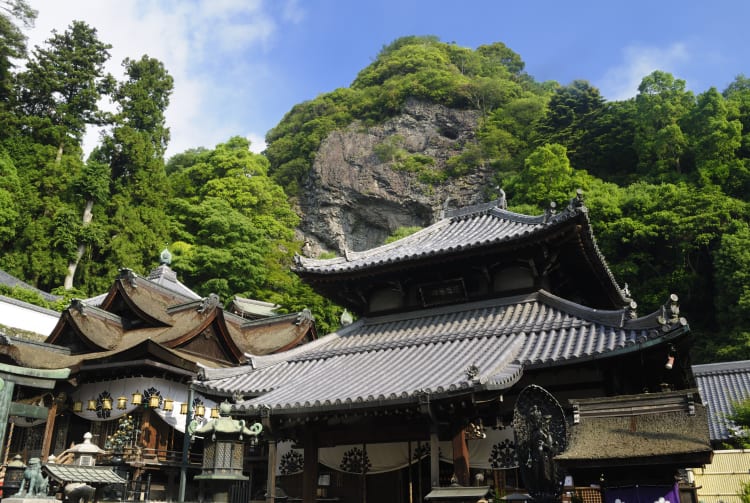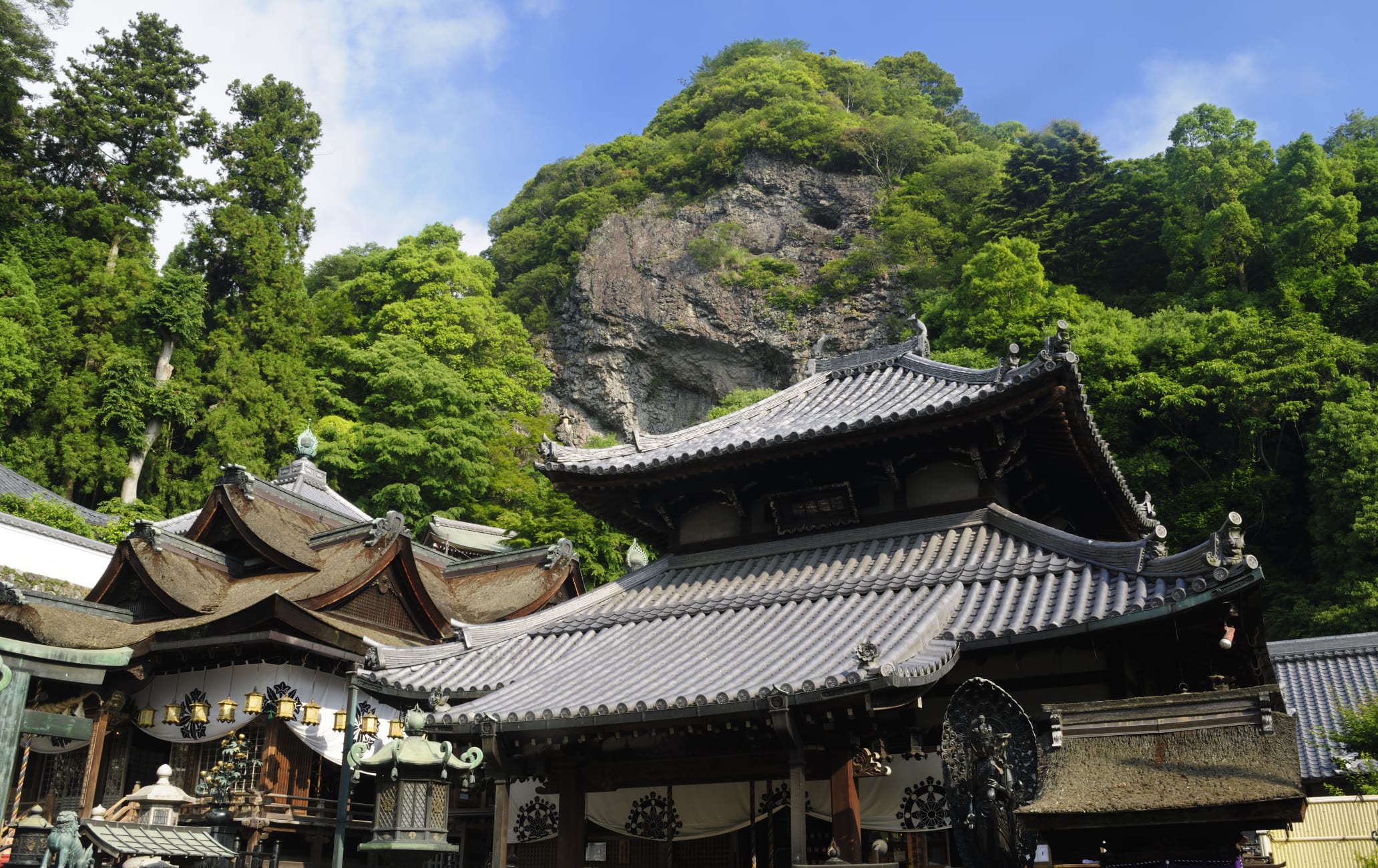Mountainside temple and enjoyable cable car ride
Only the most committed of merchants, who came to pray for their prosperity, and disciple monks would venture up the steep path to Hozanji Temple. Luckily, for the modern visitor, there is a cable car.
Don't Miss
- The great view down into the Nara basin
- The small waterfalls in the area, one of the more easily missed highlights
- The wooden treasure bags, which people rub their wallets on to receive financial fortune
Quick Facts
Hozanji Temple is one of many sites of worship on Mt. Ikoma
The deity enshrined here is descended from the Hindu pantheon
How to Get There
Walking up to Hozanji Temple from Kintetsu Ikoma Station is possible. The walk is approximately 1.5 kilometers with a steep incline and takes about 30 minutes.
For a more leisurely excursion, take the cable car from just outside Kintetsu Ikoma Station.
A place of religious study
Perhaps it was because such strong discipline was required to live up on the peak that some of the most revered religious personalities came to study here, the most notable being Kukai (Kobo Daishi). Kukai founded the Shingon school of Buddhism.
Ganesh, the elephant god
Hozanji Temple is considered an interesting temple because of the Buddhist statue enshrined there: at this temple the image has the head of an elephant instead of the usual human.
If the statue feels like something from the Hindu faith rather than the Buddhist belief system, it is because the statue at Hozanji Temple is believed to have been inspired by the Hindu god Ganesh.
The entity is so important that it is not possible to see it. But simply being in its presence is linked to success in business, wisdom, and joy.


September festivals
Near the main hall, there is a small path filled with small statues of Jizo and other entities. The carved stone figures look particularly spectacular bathed in soft lantern light during the annual lantern festival in late September.
The latest information may differ, so please check the official website


























































